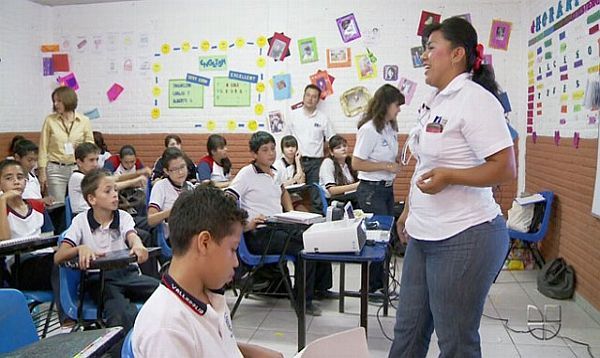Mexico City, Mexico ó Last Thursday marked "National Teacher Appreciation Day" in Mexico, but new data about the salaries of some public school teachers only make parents less happy with their schools.
More than a year after an education overhaul in Mexico, a private research center recently announced that it had found hundreds of teachers making "exorbitant" salaries, scores who earn more than the nationís president, hundreds of "ghost schools" - which siphon off funds but donít exist - and even hundreds of schools that donít have electricity.
In Hidalgo state, the Mexican Institute for Competitiveness reported, the payroll shows 1,440 supposedly active teachers aged 101 - all with the same birthday, December 12th, in the year 1912.
More than 7,100 teachers earn more than the equivalent of $93,100 a year, the institute said. Seventy are paid more than the $180,000 or so earned by Mexican President Enrique Pena Nieto.
There are 812 schools in the state of Guanajuato that receive funding but donít in reality don't even exist.
Education reform was one of the first topics that Pena Nieto tackled upon coming to office in late 2012. He pushed through a constitutional reform that took back control of the schools from a powerful national teachersí union, and in February 2013 his administration jailed the head of the union, Elba Esther Gordillo, on corruption charges.
Polls find that Mexicans rank overhauling public schools as important, but satisfaction with the reform to date is tepid.
Alexandra Zapata, an economist who led the study for the think tank, said the vast majority of Mexicoís 2 million-plus public school teachers earned what she termed "normal" salaries, averaging slightly under the equivalent of $2,000 a month.
"But we also have a segment of the teacher ranks with salaries that are absolutely inexplicable and exaggerated," Zapata said, noting that the teachers who earn $93,100 or higher make 10 times what the average professional worker in Mexico pulls in each year.
The Organization for Economic Cooperation and Development, a Paris-based group, estimates the average per-capita income in Mexico at $12,850 a year but notes the figure is skewed because the earnings of the richest Mexicans are so high.
One teacher whom the study uncovered, identified only as A. Ramirez Z., earns the equivalent of $561,865 a year at his post in the poor southern state of Oaxaca.
Implementing many facets of the education overhaul last year fell to the governors of Mexicoís 31 states and the federal district of Mexico City, since funds are channeled through them.
Some states have been reluctant to cut back on the featherbedding of teacher payrolls, either as a source of corruption or to keep the union happy, Zapata said.
"Someone either in the state or in the union is receiving these resources," she added.
The think tank found vast inefficiencies in spending per student. The border state of Baja California spends 2.65 times more to educate each child than does Queretaro, a central state thatís the hub of Mexicoís aerospace industry, the study found.
The states of Guerrero, Zacatecas, Veracruz, and Mexico all spend at least 2.5 times more than the average of other states on education, it said.
The study also identified 536 secondary schools that are supposed to operate through satellite teaching and digital hookups with computers but donít have electricity.
Original Story


